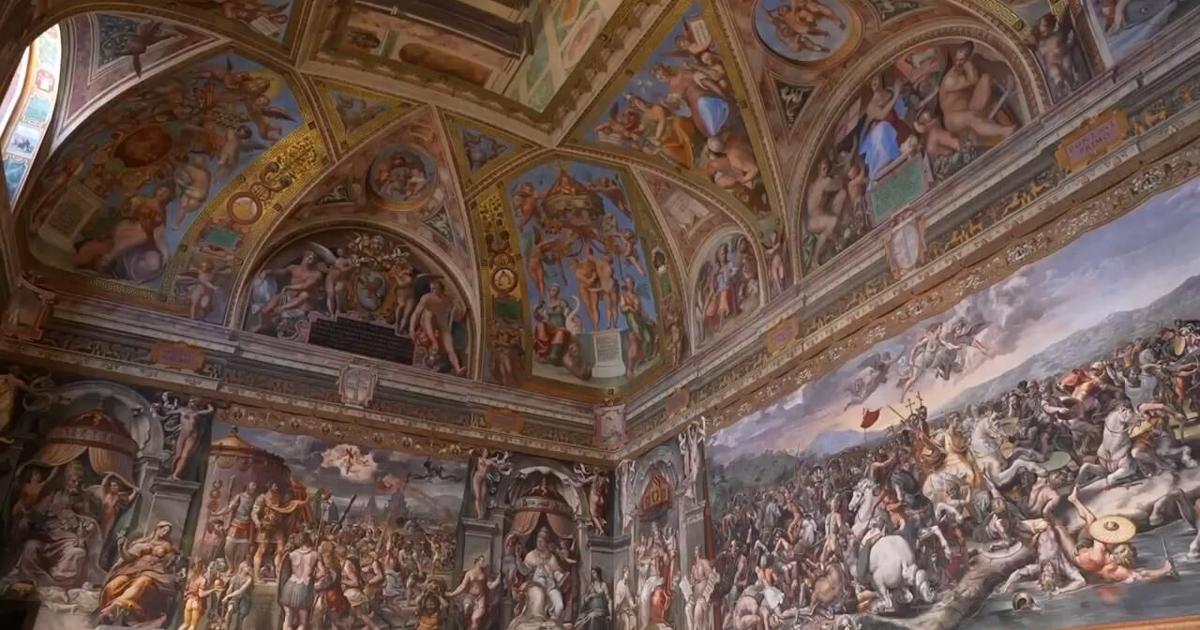After ten years of meticulous work behind the scenes, one of the Vatican’s most breathtaking treasures has finally reopened in all its glory.
The Hall of Constantine, the largest and most dramatic of the famous Raphael Rooms, has undergone an extraordinary restoration—and the result is nothing short of spectacular.
Hidden Behind Scaffolding Since 2015
The hall was partially closed to the public in 2015 so that delicate conservation efforts could begin.
For years, the frescoes were shielded from view as experts worked tirelessly to clean, preserve, and restore the centuries-old masterpieces.
Now, the transformation has been unveiled—and it’s being hailed as a triumph in both the art and scientific communities.
At a press presentation on June 26, Barbara Jatta, director of the Vatican Museums, stood proudly in front of the restored walls and said, “In a way, we have rewritten the history of art.”
Meet the Team Behind the Magic
Jatta was joined by several key figures from the project, including Fabrizio Biferali from the Vatican’s art department and restorers Fabio Piacentini and Francesca Persegati.
Fabio Morresi, who heads up the museum’s Scientific Research Office, highlighted how the restoration wasn’t just about beauty—it also uncovered new insights into the techniques of Renaissance legend Raphael.
The team emphasized that this wasn’t just a restoration—it was a rediscovery.
Bringing Back the Brilliance of Raphael
Raphael Sanzio, one of the towering figures of the Italian Renaissance, was commissioned by Pope Leo X in the early 1500s to paint the hall.
The room’s central fresco, “The Vision of the Cross,” is a dramatic depiction of Constantine’s legendary victory at the Milvian Bridge.
Now, after nearly five centuries of wear, and ten years of careful repair, the colors and details feel vivid again.
The restoration process unfolded in eight stages, beginning with that famous wall and ending with the hall’s intricate vaulted ceiling painted by Tommaso Laureti.
Even the scaffolding was planned to follow the original painting sequence, offering a rare look at how Raphael’s studio may have operated at the time.
A Renaissance Twist—Oil Painting on a Wall?
Perhaps the most exciting revelation came from the discovery of something art historians only suspected: Raphael didn’t just use traditional fresco techniques—he experimented with oil on plaster, something highly unusual for murals of his era.
Two female figures in the hall—Comitas and Iustitia—were found to be painted in oil directly by Raphael himself.
Jatta noted that while historical texts hinted at Raphael’s artistic experiments, no one had been able to pinpoint exactly what those experiments were—until now.
How Science Brought Raphael’s Secrets to Light
To make this breakthrough, the team used cutting-edge technology: infrared reflectography, ultraviolet imaging, and chemical paint analysis.
What they found was a natural resin called rosin that had been heated and applied to the wall, giving Raphael flexibility to retouch and visually unify the image—something standard fresco techniques couldn’t easily do.
In short, this wasn’t just a touch-up. It was a deep dive into the mind of a master.
More Than Just a Restoration—A Reinvention of the Past
The Vatican Museums are now calling the project “exemplary,” and with good reason.
It not only preserved Raphael’s artistry but also added new understanding to how the Renaissance painter challenged the norms of his time.
With the Hall of Constantine now fully open once more, visitors can stand where popes, artists, and scholars have stood—and see the space as it might have looked five centuries ago, glowing with renewed life and rich with newly uncovered stories.

